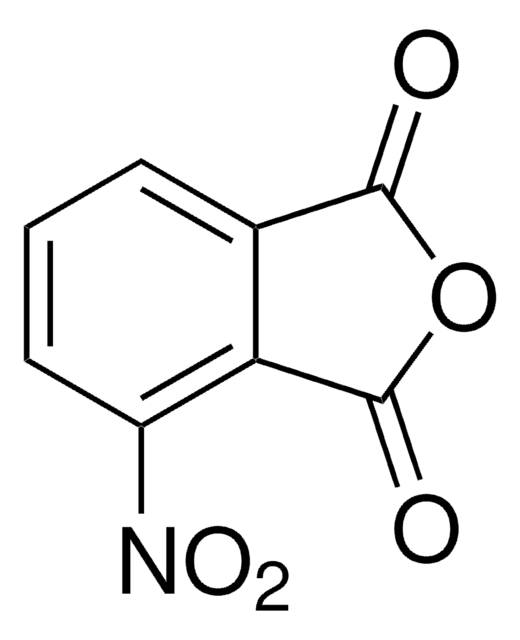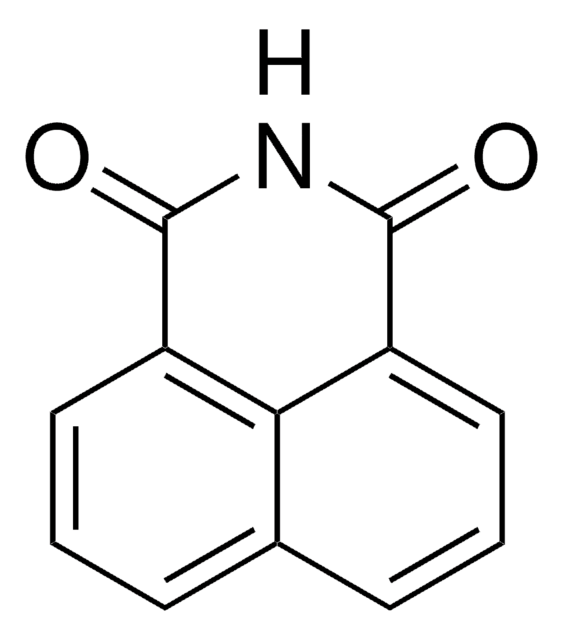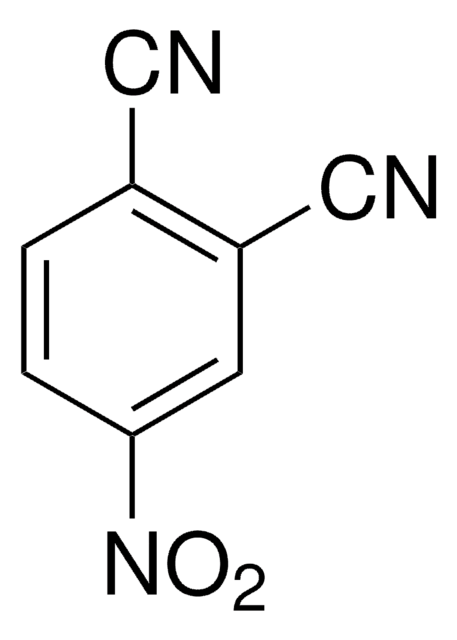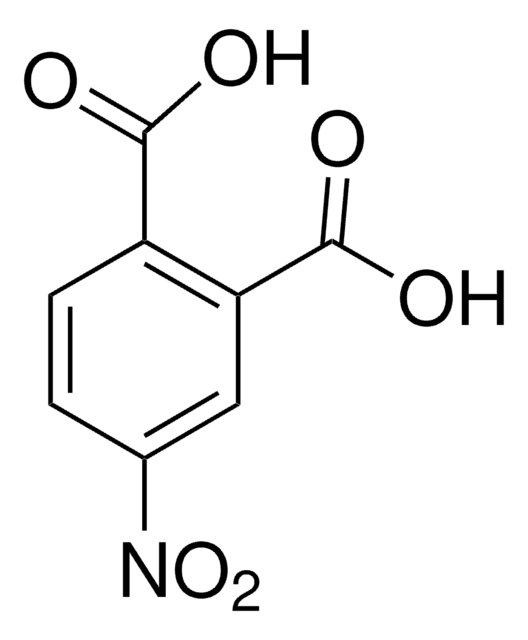おすすめの製品
シグナルワード
Warning
危険有害性情報
危険有害性の分類
Eye Irrit. 2 - Skin Irrit. 2 - STOT SE 3
ターゲットの組織
Respiratory system
保管分類コード
11 - Combustible Solids
WGK
WGK 3
引火点(°F)
Not applicable
引火点(℃)
Not applicable
個人用保護具 (PPE)
dust mask type N95 (US), Eyeshields, Gloves
適用法令
試験研究用途を考慮した関連法令を主に挙げております。化学物質以外については、一部の情報のみ提供しています。 製品を安全かつ合法的に使用することは、使用者の義務です。最新情報により修正される場合があります。WEBの反映には時間を要することがあるため、適宜SDSをご参照ください。
Jan Code
332097-5G:
332097-VAR:
332097-25G:
332097-BULK:
この製品を見ている人はこちらもチェック
Asghar Davood et al.
Medicinal chemistry (Shariqah (United Arab Emirates)), 8(5), 953-963 (2012-06-30)
A series of compounds including N-aryl substituents of phthalimide and 4-nitrophthalimide were synthesized and evaluated for their anticonvulsant properties. The in vivo screening data suggest that all the analogs have the ability to protect against pentylenetetrazole-induced seizures. These compounds exerted
Axel G Griesbeck et al.
Photochemical & photobiological sciences : Official journal of the European Photochemistry Association and the European Society for Photobiology, 9(10), 1385-1390 (2010-09-08)
The chiral chemosensor 1, based on a thiourea-activated phthalimide, is available by four reaction steps from 4-nitrophthalimide. 1 detects fluoride, chloride, acetate, and dihydrogen phosphate anions by changes in UV-vis absorption. Fluoride in excess induces deprotonation whereas the other anions
N Takihi et al.
Mutagenesis, 8(3), 257-264 (1993-05-01)
A method is described for using the fragments identified by the CASE structure-activity relational expert system to identify the type of chemicals that require further testing in mutagenicity and clastogenicity assays. Inclusion of such chemicals will increase the informational content
Jun Yang et al.
Biotechnology and applied biochemistry, 66(1), 33-42 (2018-09-20)
A nitroreductase-encoded gene from an efficient nitro-reducing bacterium Streptomyces mirabilis DUT001, named snr, was cloned and heterogeneously expressed in Escherichia coli. The purified Streptomyces nitroreductase SNR was a homodimer with an apparent subunit molecular weight of 24 kDa and preferred NADH
Yue Sun et al.
Biomaterials, 117, 77-91 (2016-12-13)
Photodynamic therapy (PDT) has already shown immense potential in antitumor fields due to its low systemic toxicity and negligible drug resistance. However, the clinical application of current photosensitizers is still restricted by the low singlet oxygen yield or insolubility. Herein
ライフサイエンス、有機合成、材料科学、クロマトグラフィー、分析など、あらゆる分野の研究に経験のあるメンバーがおります。.
製品に関するお問い合わせはこちら(テクニカルサービス)










